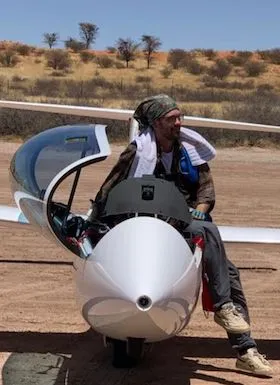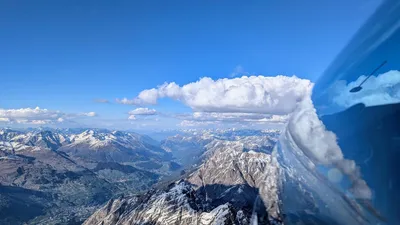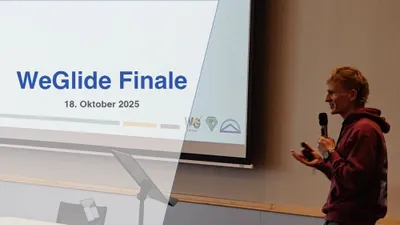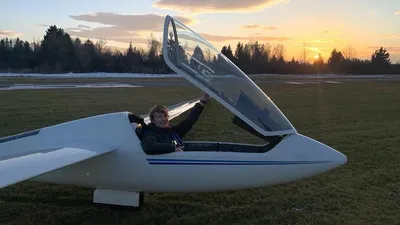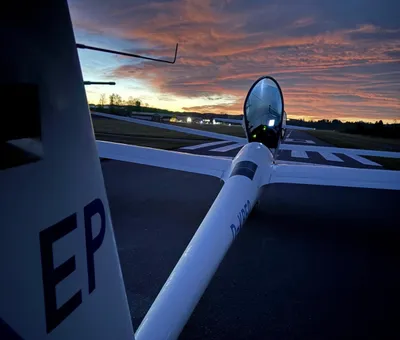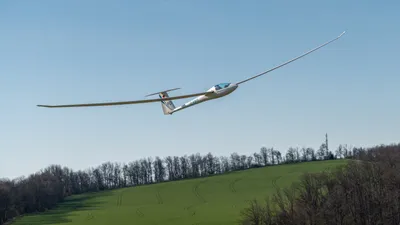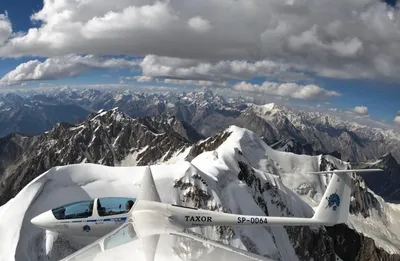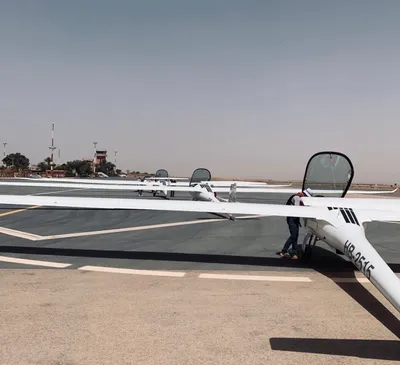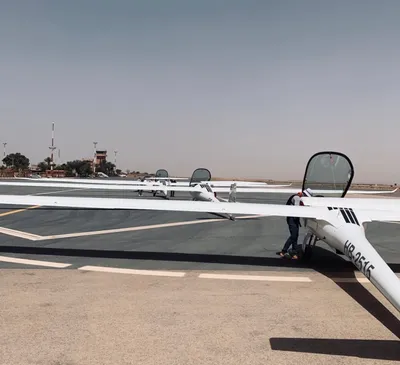Welcome to 15m Class, Uwe Wahlig
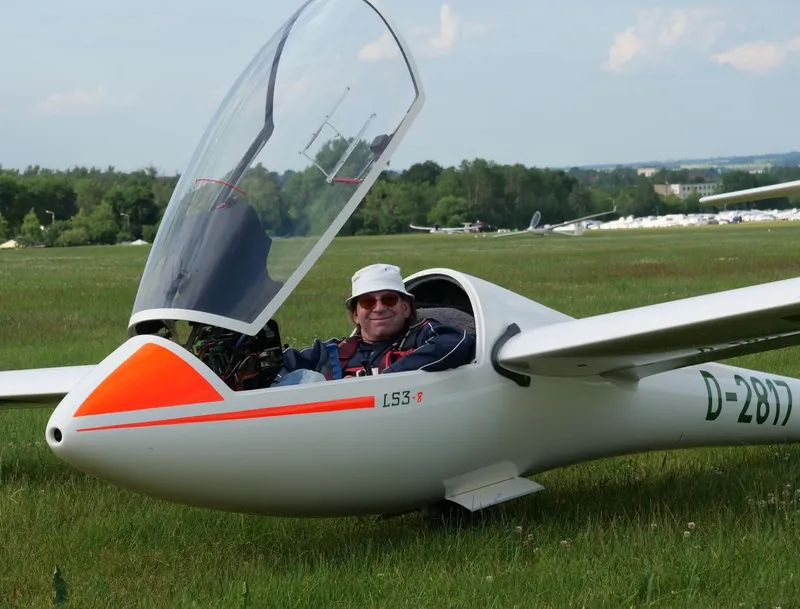
The name Uwe Wahlig has been appearing in the ranking lists of high-class competitions in club class for some time. The consistency that Uwe shows with his LS 3 is particularly impressive. He achieved the provisional crowning glory last year with the World Championship title in France. A few days ago he took an outstanding 4th place at the German Championships in the 15m class, including a day win on the fastest day. On this occasion, we are very happy that Uwe told us a few impressions from his life as a glider pilot!

Uwe, congratulations on this fabulous performance at the German Nationals in Zwickau! Tell us a bit about your first steps in gliding.
I've been fascinated by flying for as long as I can remember. My father and my brother were passionate RC model pilots. I made my own first experiences as a small child with paper planes I folded myself, which I wanted to fly from the 1st floor as far as possible over the empty neighboring property. Later on, is started flying RC models too and at the age of 14, I finally took my first gliding lesson in Bensheim. That's my local Club till today!
You used to be an amateur pilot and turned into winning the world championship just in a few years. How did you do that?
I gained my first competitive experience as a student pilot in regional youth comparison flying, which is quite common for young glider pilots in Germany. I qualified for the national youth comparison and won them in 1990. It's not a classic competition, as the focus is on precise flying and target landings. My entry into real competitive gliding could hardly have been better: the regional championship in Gelnhausen, also in 1990. The competition was held during cracking weather conditions and 1000 km would have been possible almost every day. In this competition, I flew more than 500 km for the first time with an average speed of over 100 km/h. By the way, back then, I flew the same LS3 as I do today.
In 1994, I was the Hessian junior champion, and one year later at the German Junior Nationals in Braunschweig, I took 9th place. After that, I didn't take part in qualifying and German championships anymore because I didn't have a competitive aircraft in the 15m class with the LS3. Nevertheless, I still flew a lot. Long DMSt flights and vacations in interesting gliding areas have alternated with flight instructor services. But I never left competitive gliding completely and took part in regional competitions such as the Übersberg competition, the Hotzenwald competition, or the Dörnbergwoche. Someday, one of the participants told me at such an event that I could start with the LS3 in the club class. I didn't want to believe it at first, because naturally, it's a flapped racing class aircraft. But a look at the DAeC competition regulations convinced me, and then in 2016, I registered for my first club class qualification for the German Championship 2017.
The other club class pilots initially saw me as an outsider because in their opinion the index for flapped gliders was far too high for a reasonable chance of winning. I was convinced of the performance of the LS3, and in the meantime, the trend has prevailed to fly aircraft at the upper end of the performance scale permitted in the club class.
Well, what flying skills are you working on since then?
Competitions allow comparing your strategic decisions and flying techniques to others in a clear way. You get direct feedback, on if someone did it better or not because all of them are on the same task with similar weather conditions. In recent years, I have mainly worked on recognizing strong thermals better by observing the clouds and optimizing my flight path between the thermals by making small course changes to benefit from possible areas of the climb.
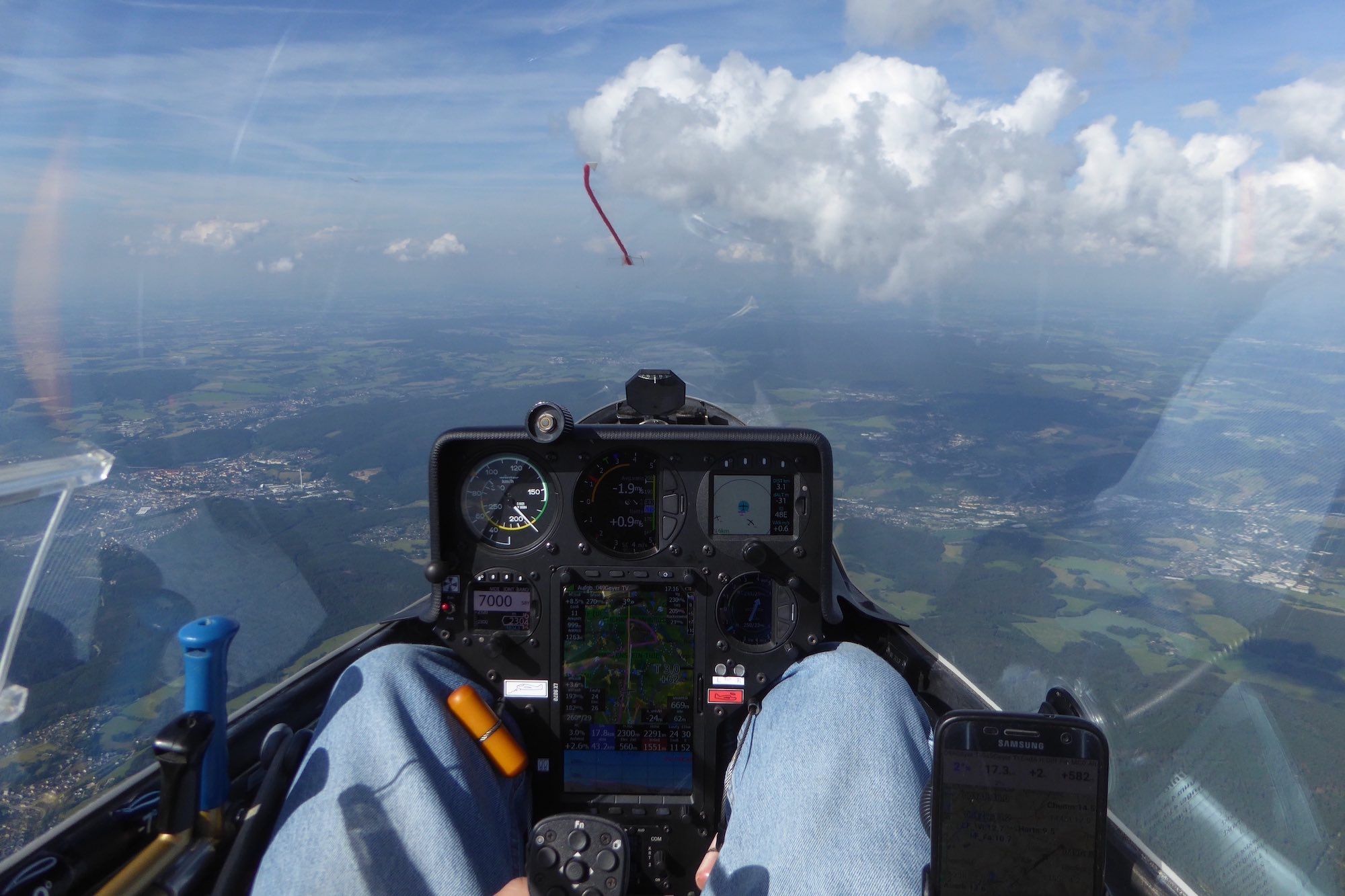
In your opinion, what distinguishes a good pilot from a very good one?
In my opinion, all very good pilots study the weather, the competition area, their equipment, and the competition rules very intensively. But that's not all. Support from the ground crew is also crucial for good performance in competition. The pilot should be able to put all his capacity into flying the competition tasks.
How did the idea come up to compete in the 15m class?
It was a big dream of mine back in the 90s to take part in a German national championship in the FAI 15m class with the LS3. Due to the fact that I have already qualified for the next World Championships in the club class, I had the opportunity to take part in this year's German nationals without any great ambitions for one of the top places. I was just curious how big the difference in performance is to modern gliders. And for training and gaining competitive experience, I found the idea appealing to compete in the FAI 15m class with the worst aircraft in the field and to see which flight tactics work well under these conditions.
How did you prepare for this year's German Nationals in Zwickau, and how do you train in general?
I picked out my documents from the 2019 Nationals in Zwickau. Back then, I competed in Club Class, but the area is still the same. I studied the ICAO map from 2019, where I highlighted areas for thermal hotspots and prepared it as a background map for my LX device. For me, the best training is taking part in competitions as much as possible. This year I have already been to Slovakia, where I took part in the high-class competitions in Nitra and Prievidza. Due to the continental climate, gliding conditions in Slovakia are very good early in the year, and many pilots use these competitions for training and to start the competitive season.
You seem to have literally merged with the LS 3. What excites you about the plane, and what distinguishes the D-2817/SN from other LS3s?
My brother, my father, and another glider pilot from Bensheim bought the "Sierra November" as "Bravo India" in 1986. They actually wanted to buy an LS1-f as the LS6 and the Ventus already existed, so the LS3 was already obsolete in the 15m class. The paint on the SN already had many cracks, so our first action was to repaint the fuselage and tail unit ourselves.
I was allowed to fly the SN for the first time in 1987 and I liked both the flight characteristics and the flight performance. In a direct comparison with other gliders, I am always surprised how well the LS3 performs and although it actually has the image of "LS-Lead" to climb badly, I have always found the climb performance to be very good and with the winglets even excellent. However, my opinion on this is certainly not objective because I have flown about 2500 hours with this aircraft and even if it has some errors, I will certainly not notice them anymore.
The D-2817/SN is a normal LS3, the 66th of 155 and in May 1977 it was delivered to Ingrid and Jochen Blecher. The SN has had the winglets developed by Michael Wagner since 1997 and the new winglets with airfoils by Benjamin Rodax since 2021.
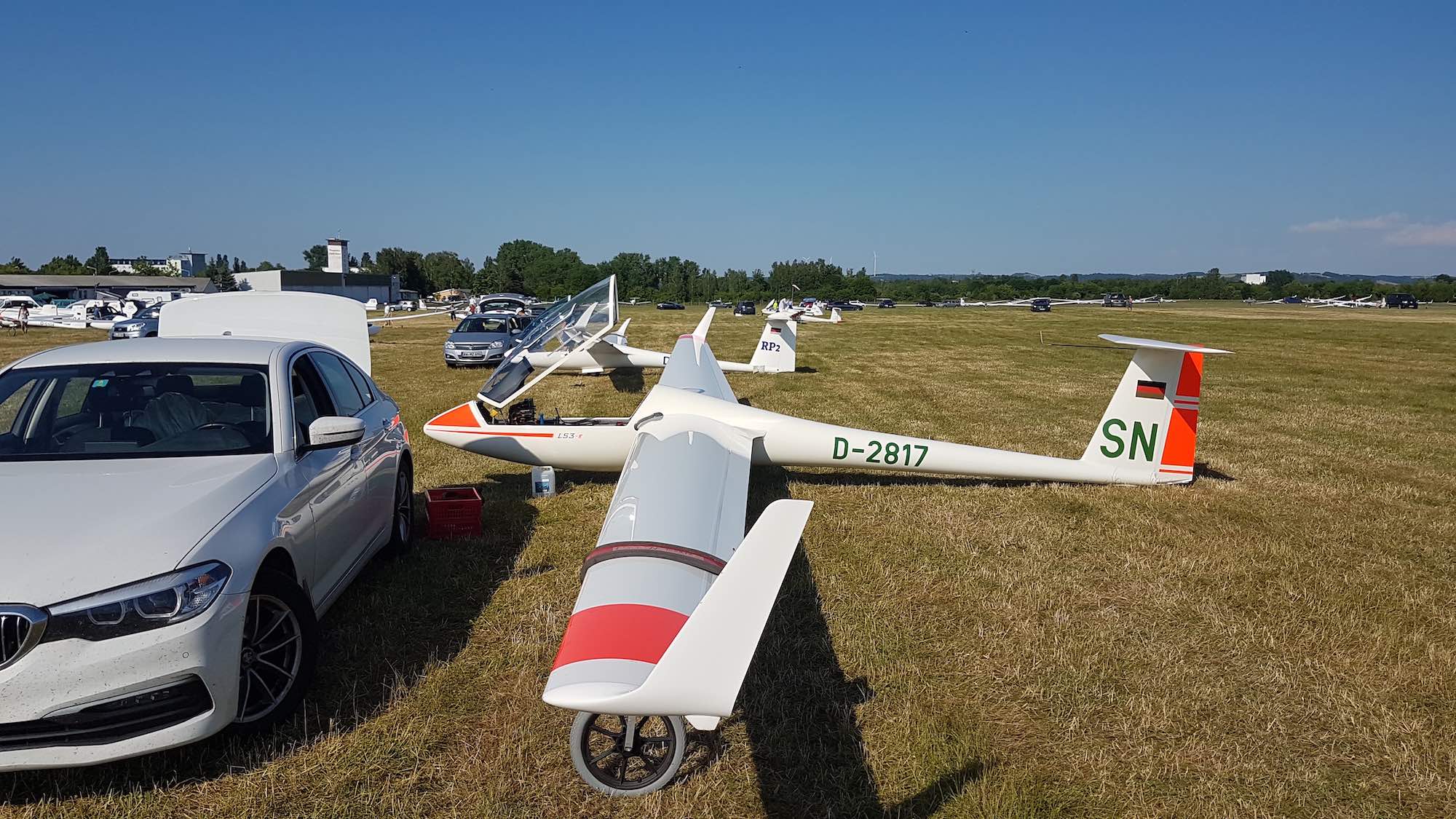
A few years ago, almost no one wanted to buy an LS3, I bought a few more LS3s, some for less than 10,000 €, and sold some again. I kept the D-2602 (5C) and the D-6832 (GS). Stefan Langer won the pre-World Championships in Montlucon with the GS and then he bought his own LS3. Incidentally, the construction number and thus the specification of how many LS3s were built cannot be determined from the serial number. However, it is not difficult because this number can be found on almost all components of the aircraft. For example, clearly visible in the trunk on the main frame.
What tips do you have for other LS 3 owners?
The LS3 is wonderfully easy to fly and in its original condition perfect for nice afternoon flights around the aerodrome. If you use your LS3 for long-distance flights, you need well-functioning bug wipers, then the performance is excellent here too.
When it comes to the last percent of performance, things get a little more complex: Most of the time, the covers for the spoilers have collapsed and have to be reworked. The seals at the top and bottom of the flaperon and towards the fuselage must fit, a turbulator should be on the underside of the wing in front of the flap gap and the canopy should fit and be tight. The LS3-a is a bit too light and can fly slower than needed for proper flow around the wing airfoil, so even in weak thermals, it needs 30 liters of water ballast for the airfoil to work properly. It also makes sense to seal the aileron control rods of the LS3-a in the wing to prevent airflow.
Once you've optimized all of that, it's also worth thinking about winglets. The LS3 has a very little optimized wing tip and therefore winglets can improve a lot. My experience is that the stability increases when circling, so efficient thermal flying requires less attention and that the LS3 with winglets can fly slower with less sink without a noticeable loss of performance in fast flight. Wolf Lemke summed it up like this: "You need bug wipers for the LS3, then nothing for a long time and then maybe winglets".
How heavy can you fly with the LS 3?
45 kg/m² or 472 kg take-off weight.
When did you notice differences from the newer gliders?
The differences are clearly there and also clearly visible. When we flew from thermal to thermal in good weather and long distances through the Upper Palatinate Forest, I just watched the JS3 and Ventus 3 slip away from me. However, I had advantages when circling and climbed very well with my relatively light aircraft. With extremely good climb rates and under cloudy streets, it is worth having the highest possible wing loading. In competitions, however, there is also flying on days with weak thermals. The modern 15/18m aircraft with engines have a disadvantage because with a 15m wingspan they have a minimum wing loading of between 45 and 50 kg/m² and this makes it difficult to climb in weak updrafts.
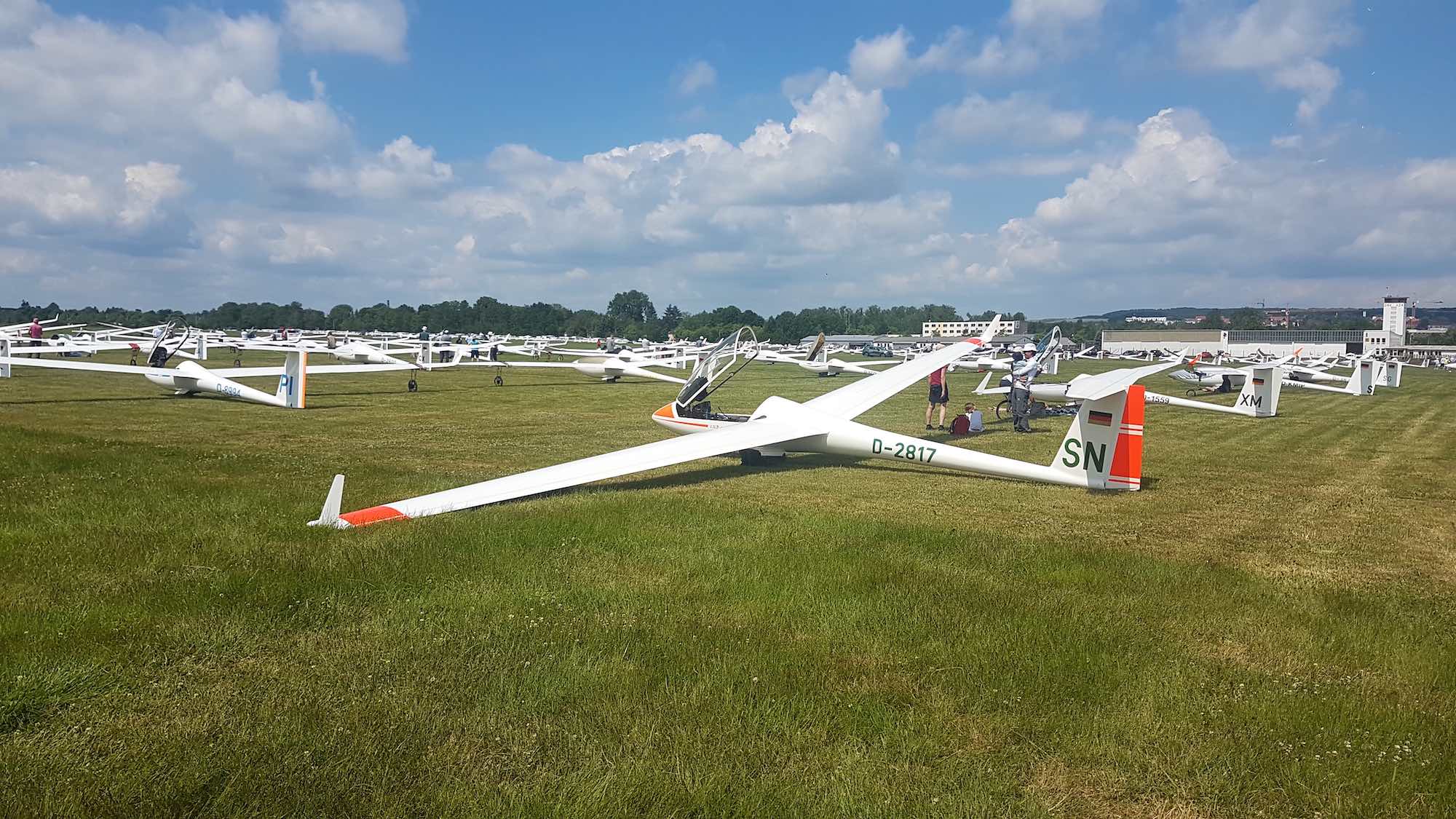
On days with weak thermals or when the thermals weakened in the evening or because of propagation and shadowing, the pilots with the pure 15m gliders had advantages because we could drop the water ballast and fly on with wing loadings between 34 and 38 kg/m². During the competition, I surprisingly often managed to make up for the greater loss of altitude when flying ahead in the next updraft through better climbing.
What characterizes your flying style, what do you do differently from other pilots?
I used to have the habit of flying long distances straight ahead to the next nice cloud and climbing there. I had plenty of time to look at the landscape, relax and enjoy flying. In the meantime I have learned to use energy lines, i.e. to reduce the loss of altitude and to extend the glide angle with small detours and course changes, even weak updraft currents under vapor crests and a series of weak updrafts on the way to the next beard. Through years of practice, I mastered my airplane perfectly while climbing and can achieve optimal climb rates in updrafts.
In which areas do you still want to improve?
I just enjoy flying overland, covering long distances, and exploring the meteorological conditions that are different each time. I would like to have a photographic memory to compare the new cloud picture with the last one as I thermal after each circle and thus find out which cloud develops best on the course. Since that doesn't really work for me, I continue to improve what I can already do:
Interpreting ground characteristics in connection with knowledge about the subsoil, correctly assessing the wind influence with leeward and windward, the cloud picture in front of me, and interpreting the small signs of thermals on the way in such a way that my flight path is optimal and I can reach the next strong beard with little loss of altitude.
What electronic equipment do you fly with?
Until 2016, I was still flying with very conventional gear, a Vario from Winter, a Zander SR780 E-Vario, a cross-country flight computer with GPS developed by club mates in Bensheim, and a Volkslogger.
Now that has completely changed. The only mechanical instrument is the airspeed indicator. Because of the ability to superimpose virtually any background as a geocoded bitmap map for the moving map, I purchased an LX9070. For each competition area, I prepare geological maps, relief maps, and maps with marked updraft areas and hotspots. I either copy the maps from the screen or scan them in. The geocoding then works in the SeeYou software. During the flight, depending on the weather, I then switch to the map that seems most important to me. Klaus Schäfer brought me into contact with Horst Rupp, Max Betz, and others early on with new variometers based on high-precision GPS receivers and other sensors Wind display developed. They call their project Larus. Last year before the World Cup I had the opportunity to test Larus in a direct comparison with HAWK and the vario display of both devices was clearly better than the E-Vario compensated by the baffle disk vario and the TE.
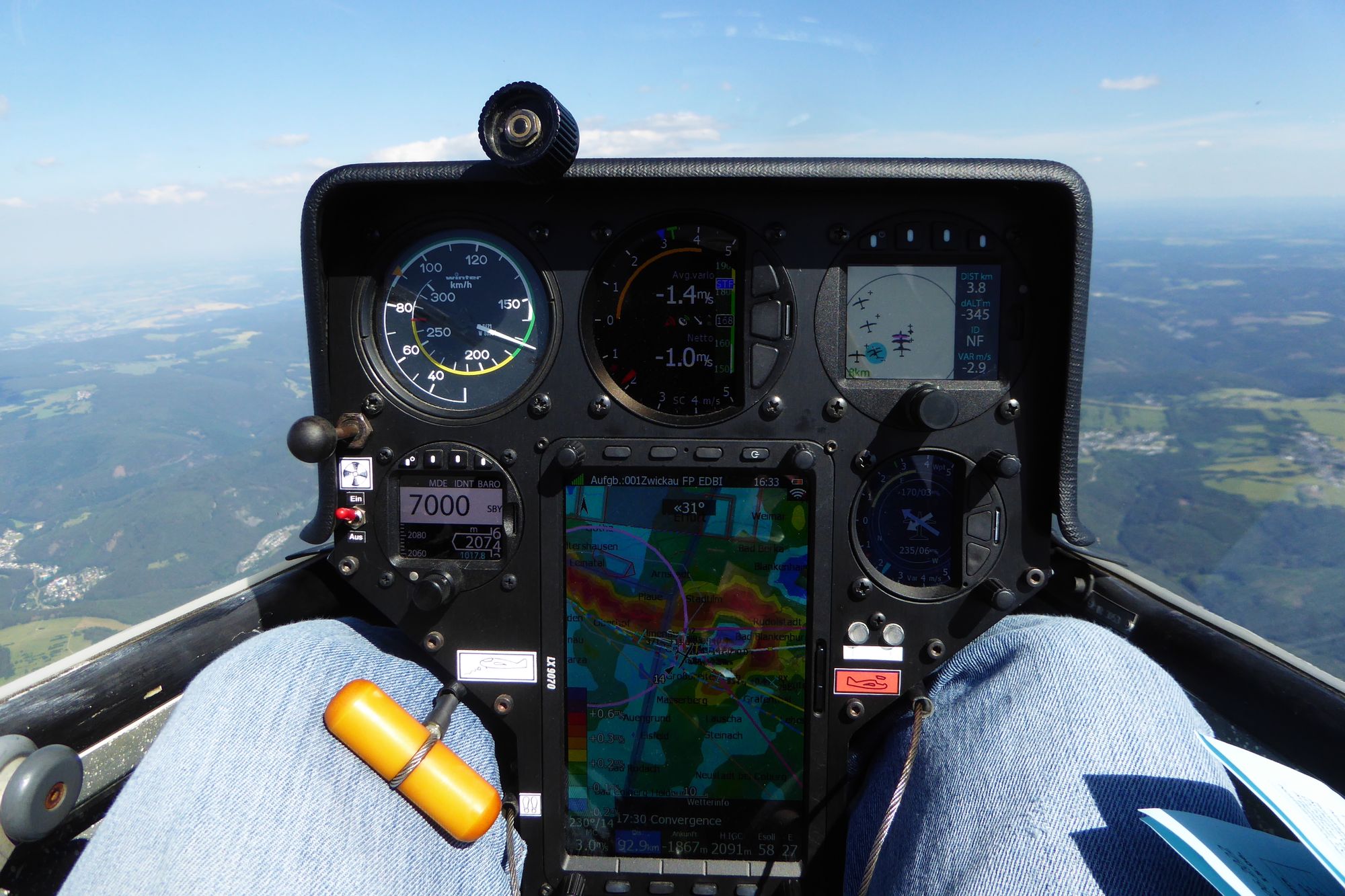
It was a tight decision to build the Hawk into the LS3 because it wasn't quite clear whether Larus would work stably until the World Cup. In the end, it worked and my team partner Stefan Langer flew with Larus at the World Championships and I with HAWK.
At first, I was fascinated by the idea of having an accurate wind indicator, but pretty quickly I discovered the highly accurate and direct variometer display. This is most important when deciding where exactly to circle in the beard. With the Hawk, even at high speeds and in turbulent air, there is a clear indication of whether to expect a climb or a descent. I make far fewer search circles than I used to and often when circling I am already in the center of the climb and only have to re-center a little. In uneven and turbulent beards, centering is faster and more efficient than before.
Do you use live data during a competition task?
Yes, especially weather maps and forecast maps that I can display in the LX9070. One day at the nationals it was the convergence map from SkySight with an almost kilometer-accurate prediction of the convergence over the Thuringian Forest, which we were able to use perfectly for our competition task. Sometimes I also open satellite and radar images directly on my smartphone. Occasionally I look in the OGN or Live Tracking where the other pilots are on their way.
Last year you were in a team with Stefan Langer at the World Championships.
How was it for you to fly without a team partner?
I'm not completely alone in the competition. Even if I'm flying without a team partner, I consider the pilots I meet along the way as temporary team partners and fly with them for a while as long as I agree with the route. This results in longer or shorter shared flight sections.
I only learned and practiced team flying in a relaxed info team with Stefan when I was preparing for the World Cup. At the German nationals, it turned out that I was allowed to fly in the team of Henrik Bieler and Marc Schick and we often flew together, but we also parted ways when opinions about the optimal flight path were too far apart. The day on which I had the day's win was a clear team effort where we had set the course in the AAT task optimally and I happened to be a few points ahead at the end.
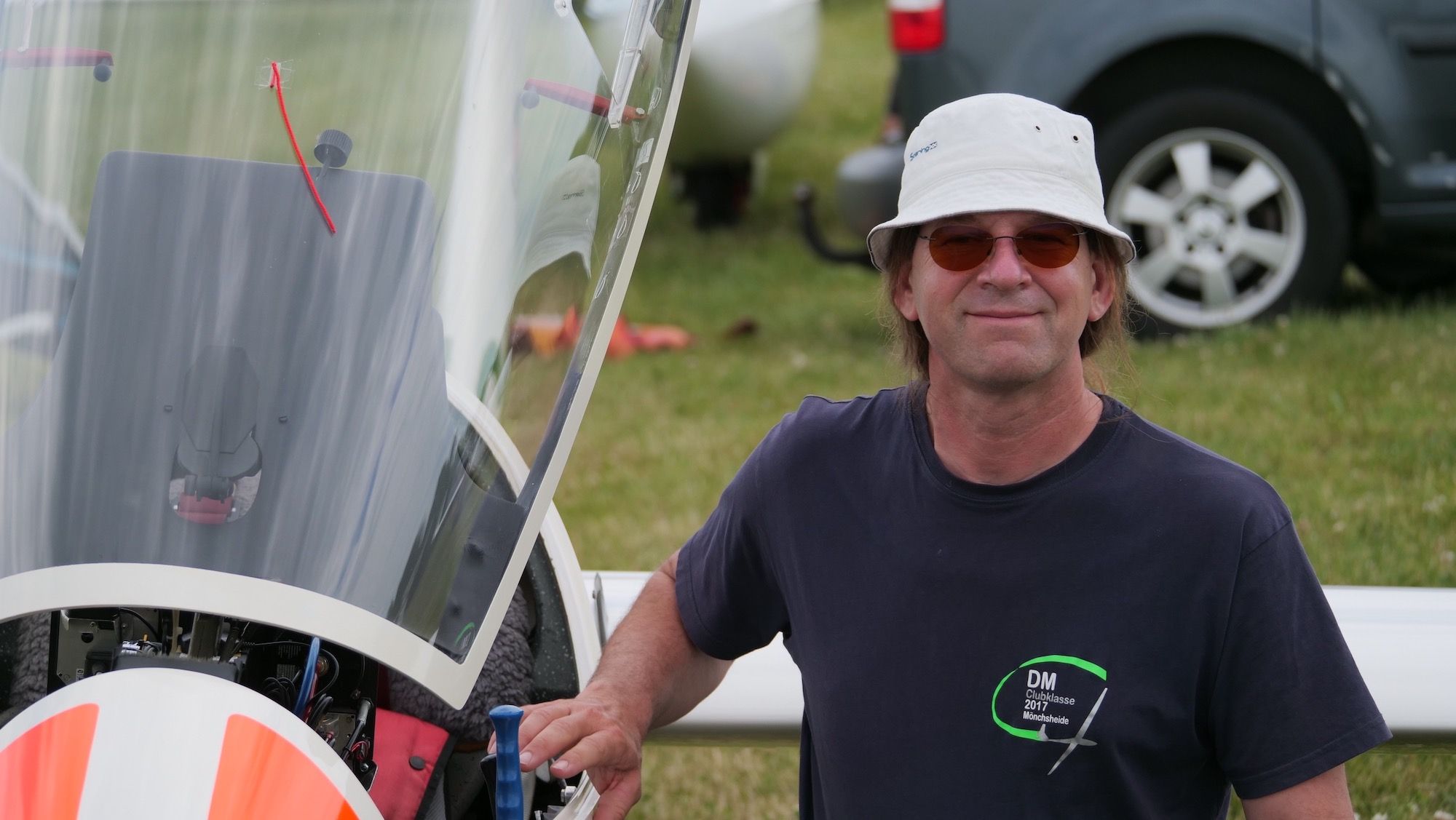
Uwe, thanks for your detailed words. We wish you the best of luck in your upcoming championships in the future!
